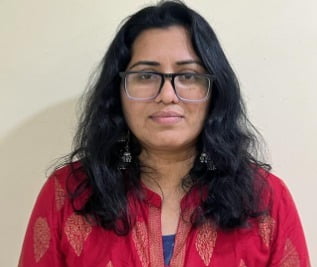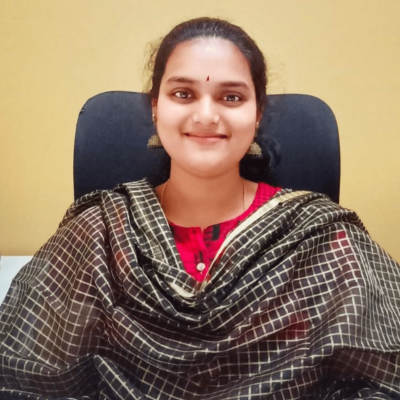Average Deal Size is the total revenue generated from all closed deals during a specific time period divided by the total number of won deals in that same period. It shows the typical monetary value of a successful sale and is a key metric for understanding sales performance and revenue patterns.
For example, if a company closed 10 deals worth a total of ₹10,00,000 in Q1, their Average Deal Size would be ₹1,00,000 (₹10,00,000 ÷ 10 deals).
This metric is valuable for:
Let’s start with the basics—no jargon, I promise. Average Deal Size (ADS) is just the average amount of money you make each time you close a sale. It’s like figuring out how much your mom’s homemade ladoos sell for at the local Diwali fair. If she sells 100 boxes for ₹5,000 total, each box goes for ₹50 on average. Simple, right?
Average Deal Size = Total Revenue ÷ Number of Deals Closed
Now, let’s make this real. Imagine you’re Ravi, a Chennai-based SaaS founder. Last quarter, you closed 50 deals and made ₹25 lakhs.
₹25,00,000 ÷ 50 = ₹50,000 per deal
So, on average, each client brought in ₹50k
But here’s the kicker: averages can lie. If one client paid ₹5 lakhs and the rest paid ₹30k, your ADS still looks great. But does that mean your business is thriving? Not exactly. You’re relying on a few big fish while the rest are minnows.
Markets change faster than Mumbai’s weather. Remember when India’s edtech startups like Vedantu became overnight stars during lockdowns? Parents were desperate, deal sizes ballooned. Now, with schools reopening, those same companies are hustling to keep numbers up. Meanwhile, electric vehicle startups like Ather Energy are cashing in as fuel prices soar. Lesson: Ride the wave, but don’t ignore the tide.
Ever bought a phone on Amazon and seen “Frequently bought together” suggestions? That’s cross-selling. Indian businesses often miss this trick. Example: A small bakery in Jaipur started offering “monsoon special” bundles (cake + coffee) and saw deal sizes jump 20%. Upselling isn’t rocket science—it’s just thinking one step ahead.
B2B deals in India are like weddings—long negotiations, endless chai meetings, but big payoffs. Think Infosys bagging a ₹500 crore IT contract. B2C? It’s the street vendor selling 500 vada pavs a day. Both models work, but you can’t compare their ADS.
Pricing too low? You’re the “cheap option.” Too high? You’re “overpriced.” Take FreshMenu: their ₹199 lunchbox targets office crowds, while ₹499 “gourmet” dinners cater to date nights. Different prices, same kitchen.
A good salesperson can turn “We’ll think about it” into “Sign here.” I once saw a Delhi car dealer add free insurance and 10 servicing sessions to a Tata Nexon sale. Customer felt pampered, deal size went up 15%. Training your team to add value beats discounting every time.
ADS helps you guess next month’s revenue. If your average deal is ₹50k and you’re closing 20 deals/month, you’ll likely hit ₹10 lakhs. Simple, but powerful. A Pune-based HR startup used this to convince investors they’d double revenue in a year—and did.
Focus on high-value clients. Example: A Kochi interior designer realized 80% of her profit came from 20% of clients (those with ₹10 lakh+ budgets). She stopped taking ₹50k projects and tripled her income.
Not all customers are equal. BigBasket noticed that families ordering ₹3k/month groceries were more profitable than college kids buying ₹500 snacks. They started offering “family plans” with free delivery—retaining their VIPs.
A rising ADS means you’re moving up the ladder. When a Hyderabad app developer shifted from ₹50k freelance gigs to ₹5 lakh corporate contracts, they hired a team and scaled sustainably.
No one buys a CRM software—they buy “more free time” or “happier clients.” A Mumbai marketing agency rebranded their ₹2 lakh package as “Turn 10 Leads into ₹50 Lakh Revenue”—and doubled sales.
Combine products like pani puri—sweet, spicy, and irresistible. Example: A Surat clothing store bundles shirts (₹999) with ties (₹299) for ₹1,199. Customers feel smart, you boost ADS.
Target clients who can pay more. A Bangalore ad agency stopped pitching to startups and focused on established firms. Their ADS went from ₹1 lakh to ₹8 lakh in six months.
Teach them to negotiate. Example: Instead of “₹5 lakh is our price,” try “For ₹5.5 lakh, we’ll handle setup and training.” Customers often say yes to the extra ₹50k.
Charge based on what your solution is worth. A Nagpur CA charges ₹25k for filing taxes for a small shop but ₹2 lakh for a factory—because the stakes are higher.
Chasing ₹1 crore deals? Great—unless it takes two years to close one. Meanwhile, ₹10 lakh deals every month could keep the lights on. Balance size with speed.
ADS dipped in July? Maybe everyone’s on vacation. My friend’s travel agency freaked when ADS dropped—turned out, it was just monsoon season. Look at trends, not blips.
A ₹10k deal seems small—until that client comes back every month for years. A Delhi gym tracks “lifetime value” and realized their ₹1k/month members were worth ₹50k+ over time.
Tools like Zoho CRM (used by lakhs of Indian SMEs) track every call, email, and deal stage. A Kanpur printer saw his ADS rise 30% after spotting which clients always bought add-ons.
No budget for fancy software? A Nashik baker tracks ADS in a simple spreadsheet: total monthly revenue ÷ number of wedding cake orders. It works.
Ask your top performer: “What’s your secret?” A Coimbatore hardware store owner discovered his star salesman always offered free delivery on orders over ₹50k—so he made it policy.
Average Deal Size isn’t about fancy math. It’s about asking: “Are we getting better at this?” If your deals are growing, you’re likely building trust, solving bigger problems, or finding the right clients. But don’t forget—the best businesses balance fat deals with steady volume.
So, track your ADS, but don’t let it rule you. Talk to customers. Train your team. Experiment. And remember, even a ₹100 deal can turn into a ₹10,000 relationship if you treat people right. Now go sell something! 🇮🇳








